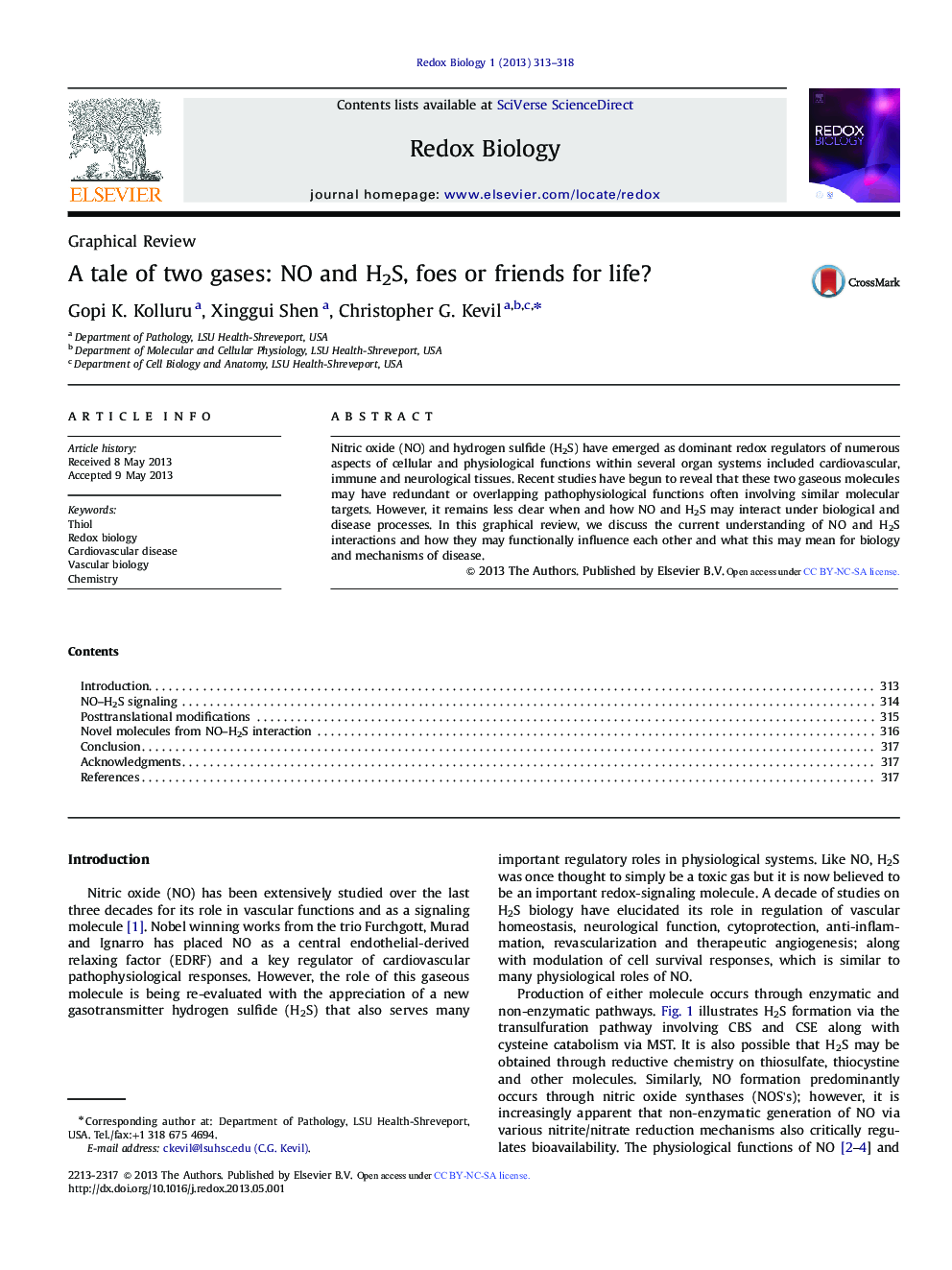| Article ID | Journal | Published Year | Pages | File Type |
|---|---|---|---|---|
| 1923210 | Redox Biology | 2013 | 6 Pages |
•H2S and NO are important gaseous regulators of numerous physiological responses.•H2S and NO may target both similar and divergent signaling and molecular pathways.•H2S and NO react with protein free thiols that differentially affect protein function.•H2S and NO metabolites can react together to yield novel biochemical products.•The presence and physiological importance of these novel products remains unknown.
Nitric oxide (NO) and hydrogen sulfide (H2S) have emerged as dominant redox regulators of numerous aspects of cellular and physiological functions within several organ systems included cardiovascular, immune and neurological tissues. Recent studies have begun to reveal that these two gaseous molecules may have redundant or overlapping pathophysiological functions often involving similar molecular targets. However, it remains less clear when and how NO and H2S may interact under biological and disease processes. In this graphical review, we discuss the current understanding of NO and H2S interactions and how they may functionally influence each other and what this may mean for biology and mechanisms of disease.
